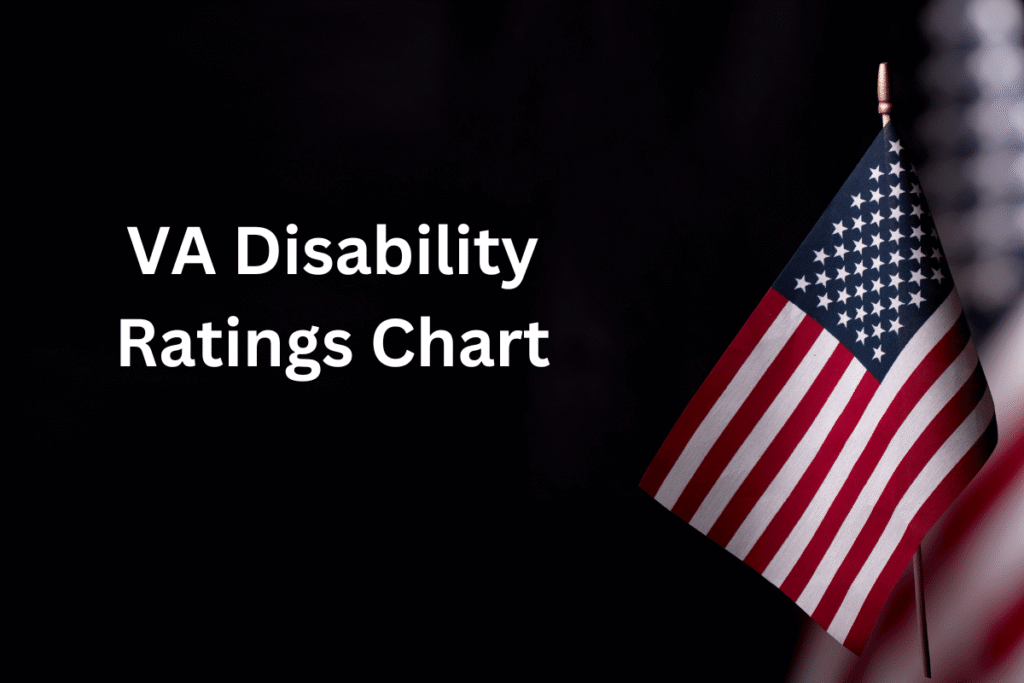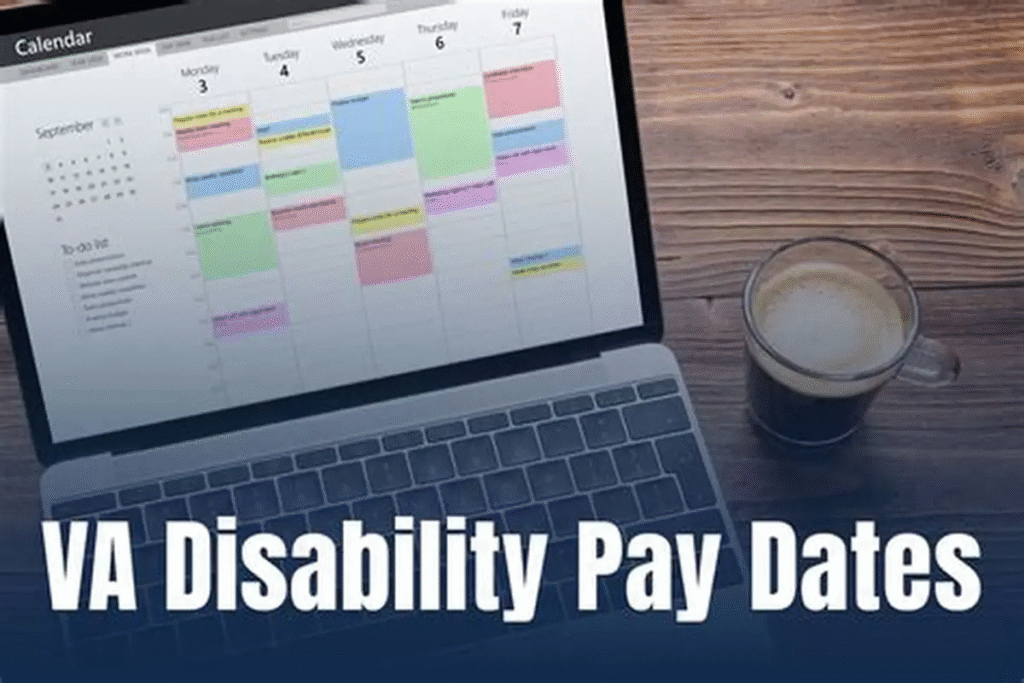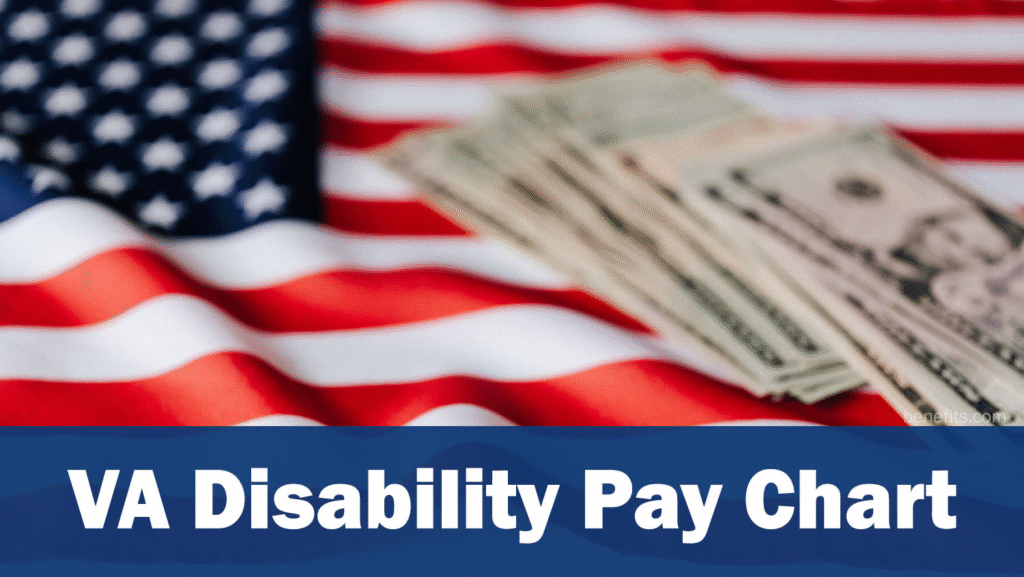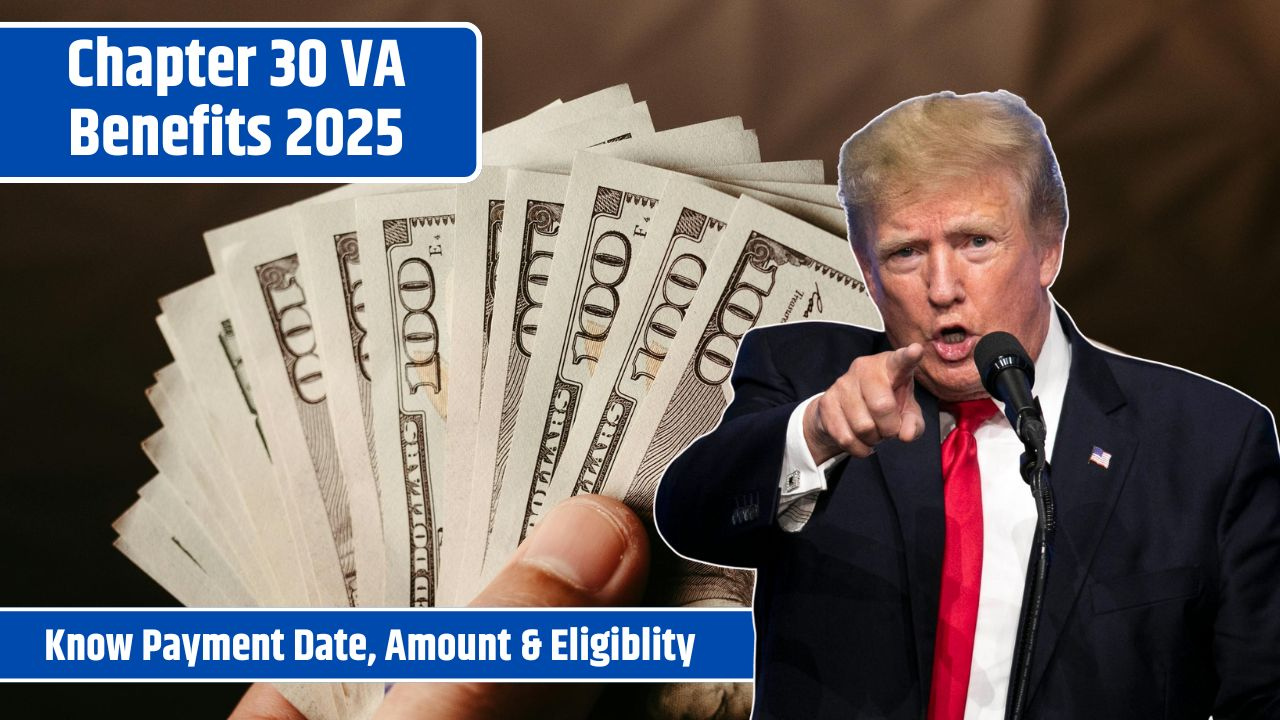The Chapter 30 VA Benefits, also known as the Montgomery GI Bill Active Duty (MGIB-AD), has long been one of the most important education and training benefit programs available to U.S. veterans. For 2025, updates have been made to the monthly payment rates, eligibility requirements, and pay charts, which will directly impact veterans, service members, and dependents who rely on these benefits for higher education, skill development, and career growth.
This comprehensive guide will cover everything you need to know about Chapter 30 VA Benefits in 2025, including the pay chart, monthly payments, eligibility criteria, how to apply, and answers to the most common questions veterans have. Whether you’re already receiving benefits or planning to apply, this detailed breakdown will give you clear insights.
What Are Chapter 30 VA Benefits?

The Montgomery GI Bill (MGIB), also referred to as Chapter 30 VA Benefits, is a program designed for:
- Active-duty service members,
- Veterans who have served in the Armed Forces,
- Certain selected reservists.
It provides education and training benefits, which can be used for:
- College degree programs,
- Non-college degree programs,
- Technical and vocational courses,
- On-the-job training (OJT) and apprenticeships,
- Flight training,
- Licensing and certification tests,
- Entrepreneurship training.
The primary purpose of Chapter 30 benefits is to ease the financial burden of pursuing further education after military service, thus supporting veterans in transitioning successfully into civilian careers.
Chapter 30 VA Benefits 2025: Key Highlights
Here are the most important updates for 2025:

- Monthly Payment Increase: Veterans will see a slight increase in their monthly education benefits to account for inflation and cost-of-living adjustments.
- Pay Chart 2025: Updated tables reflect different payment amounts depending on the type of training or education being pursued.
- Maximum Benefit Period: Veterans remain eligible for up to 36 months of benefits, which can be extended under specific circumstances.
- Application Process: The process continues to be streamlined via VA.gov, with faster approval times reported for 2025 applicants.
- Transferability: Chapter 30 benefits still cannot be transferred to dependents (unlike Post-9/11 GI Bill benefits).
Eligibility for Chapter 30 VA Benefits in 2025
Eligibility requirements remain largely consistent with prior years, but veterans should carefully review the details:
- Service Requirements:
- Must have entered active duty after June 30, 1985,
- Completed at least two years of continuous active duty,
- Or served under specific honorable conditions.
- Honorable Discharge:
Veterans must have been discharged honorably to qualify. - Contribution to MGIB:
- Service members must have elected to participate in the MGIB program,
- $100 is deducted from pay for the first 12 months of service (total $1,200 contribution).
- Active Duty or Reserve Status:
- Active-duty veterans are primary beneficiaries,
- Certain reservists may qualify if they meet special conditions.
- Education or Training Requirement:
- The program must be VA-approved,
- Veterans must enroll in an eligible institution or training provider.
Chapter 30 VA Benefits 2025 Pay Chart

The VA Pay Chart for 2025 outlines monthly payments based on the type of education or training. These rates are subject to annual updates by the Department of Veterans Affairs.
a) Full-Time Institutional Training (College/University)
- Full-Time Students: Around $2,350 per month in 2025 (approximate, varies by adjustments).
- 3/4 Time Students: Around $1,765 per month.
- Half-Time Students: Around $1,175 per month.
- Less than Half-Time: Pays only for tuition and fees (up to the maximum rate).
b) Apprenticeship and On-the-Job Training (OJT)
- First 6 months: Approx. $1,760 per month.
- Second 6 months: Approx. $1,290 per month.
- Remaining training period: Approx. $920 per month.
c) Flight Training
- Reimbursement covers 60% of approved charges (up to annual limits).
d) Licensing & Certification Tests
- Veterans can be reimbursed up to $2,000 per test, not exceeding total entitlement.
Monthly Payment Process
- Payments are directly deposited into veterans’ bank accounts.
- Students must verify enrollment monthly via VA’s Web Automated Verification of Enrollment (WAVE) system or the VA’s Education Call Center.
- Processing time has improved in 2025, with most veterans receiving funds within 5–7 business days of verification.
How Long Do Chapter 30 Benefits Last?
- Veterans are entitled to 36 months of full-time education benefits.
- These must be used within 10 years of discharge from active duty.
- Extensions are granted in cases of disability, hardship, or when pursuing approved additional programs.
Comparison: Chapter 30 vs. Post-9/11 GI Bill
Many veterans ask how Chapter 30 compares to Chapter 33 (Post-9/11 GI Bill). Here’s a quick comparison for 2025:
| Feature | Chapter 30 (MGIB) | Post-9/11 GI Bill (Chapter 33) |
|---|---|---|
| Monthly Stipend | Fixed monthly rate | Covers tuition + housing allowance |
| Transfer to Dependents | Not allowed | Allowed |
| Benefit Period | 36 months | 36 months |
| Expiration | 10 years after discharge | 15 years (if discharged before 2013) or none (after 2013) |
| Approved Programs | Wide range (college, OJT, flight, certification) | Similar but covers more tuition costs |
How to Apply for Chapter 30 VA Benefits in 2025
Applying has been simplified:
- Online Application:
- Visit VA.gov → Education → Apply for Education Benefits.
- Form Needed:
- Fill out VA Form 22-1990 (Application for Education Benefits).
- Documentation Required:
- Military discharge papers (DD214),
- Proof of service,
- Enrollment verification from the school or training program.
- Approval Time:
- Average approval time: 3–6 weeks in 2025.
Common Uses of Chapter 30 Benefits
Veterans use Chapter 30 benefits for a variety of education and career-enhancing opportunities:

- Bachelor’s or Master’s Degrees at universities,
- Technical Certification Programs such as IT, healthcare, or trade schools,
- Flight Schools for aviation careers,
- Apprenticeships & OJT to gain real-world work experience,
- Entrepreneurship Courses for starting a business,
- Licensing Exams such as bar exams, teaching certifications, and more.
Advantages of Chapter 30 VA Benefits
- Financial Support: Substantial monthly payments reduce the burden of education costs.
- Flexibility: Funds can be used across different types of training programs.
- Dependable: Payments are consistent and reliable.
- Career Transition: Supports veterans in gaining new skills and re-entering the civilian workforce.
Limitations of Chapter 30 Benefits
- No Transferability: Benefits cannot be transferred to spouses or children.
- Fixed Payments: Unlike Post-9/11 GI Bill, it does not cover full tuition or housing allowance.
- Expiration: Benefits must be used within 10 years of discharge.
- Contribution Requirement: Initial $1,200 deduction during active service.
Conclusion:
The Chapter 30 VA Benefits in 2025 remain a critical tool for veterans seeking to build their futures through education and training. With updated monthly payment rates and a clear pay chart, veterans can better plan their academic and career journeys. While the Post-9/11 GI Bill often receives more attention due to its broader coverage, Chapter 30 continues to serve as a valuable option for those who contributed during their active duty service.
FAQs:
How much will I get monthly from Chapter 30 VA Benefits in 2025?
Full-time students can expect around $2,350 per month. Amounts vary for part-time or training programs.
Can I use Chapter 30 benefits for online classes?
Yes, online and distance-learning programs approved by the VA are eligible.
Can my spouse or child use my Chapter 30 benefits?
No. Chapter 30 benefits are not transferable. Consider the Post-9/11 GI Bill for transfer options.
What happens if I don’t use my benefits within 10 years?
They expire, unless you qualify for an extension due to special circumstances.
